How to Achieve a Durable Finish with Epoxy Bus Coating Techniques
Table of Contents
- Understanding Epoxy Bus Coating: Types and Benefits
- Essential Surface Preparation Steps for Optimal Epoxy Adhesion
- Applying Epoxy Coating: Techniques for a Uniform Finish
- Curing Processes: Speeding Up Drying Time for Durable Results
- Common Mistakes to Avoid in Epoxy Coating Applications
- Maintaining Your Epoxy-Coated Surfaces: Best Practices for Longevity
- Exploring the Versatility and Applications of Epoxy Glass Cloth Rigid Laminated Sheets (EPGC Sheets)
- FAQS
- Conclusion
- Related Posts
When it comes to electrical components, having a durable finish isn’t just a nice-to-have—it's really key for making sure things last and work reliably.
 Take Epoxy Bus Coating, for example; it’s super important for protecting the components and keeping them in top shape.
At Sichuan D&F Electric Co., Ltd., we’ve been in the game for over 18 years, trusted as a manufacturer and supplier of electrical connection parts and insulation structural components.
We get how crucial high-quality coatings are for boosting performance and shielding against environmental elements.
Take Epoxy Bus Coating, for example; it’s super important for protecting the components and keeping them in top shape.
At Sichuan D&F Electric Co., Ltd., we’ve been in the game for over 18 years, trusted as a manufacturer and supplier of electrical connection parts and insulation structural components.
We get how crucial high-quality coatings are for boosting performance and shielding against environmental elements.
In this blog, I want to share some tips and best practices for applying Epoxy Bus Coating — so you can get that tough, long-lasting finish that can handle the rigors of modern electrical work. Drawing from our experience and knowledge of the industry, we’ll walk through the key steps to help you get it done right, reinforcing D&F Electric’s commitment to excellence in every component we make.
Understanding Epoxy Bus Coating: Types and Benefits
Epoxy bus coating has really become a key player when it comes to making electrical components last longer and stand up to wear and tear. If you're not familiar, understanding the different types of epoxy coatings out there—and what each one does—can make a big difference in how well your electrical setups perform and how reliable they are. These coatings come in a bunch of formulations tailored for specific needs, like handling high temperatures, keeping moisture out, or fighting off corrosion. Choosing the right epoxy isn’t just about protection; it can also give your electrical bus systems a nicer, more polished look.
The electrical industry is starting to see just how valuable epoxy coatings can be, especially with market demands climbing. For example, the Steel Rebar Market is expected to hit around USD 268.4 billion by 2030—obviously, the construction sector’s booming, and with it, the need for sturdy electrical parts. Companies like Sichuan D&F Electric Co., Ltd. can definitely use these trends to improve their product lines—think better electrical connections and insulation parts—that meet the latest standards and customer expectations. Bottom line: Add epoxy bus coating into the mix, and you’re taking a smart step toward creating electrical systems that last longer and perform better overall.
Essential Surface Preparation Steps for Optimal Epoxy Adhesion
Getting a solid epoxy bond really comes down to how well you prep the surface — and honestly, that's a step lots of folks tend to overlook. Did you know that according to the Coatings Research Group, about 70% of coating failures happen because of poor surface prep? Yeah, it’s a pretty big deal. So, before you slap on that epoxy, take the time to clean the surface thoroughly — removing dirt, grease, and anything that might mess with the bonding. Using a mix of solvent cleaning and some mechanical scrubbing can really help the surface grip better.
And don’t forget about profiling the surface. Creating the right texture is key for a long-lasting finish. The ASTM recommends a roughness of around 3 to 5 mils for the best adhesion, and tools like sanders or shot blasters do a great job at achieving that. Also, it’s super important to check the moisture level in the substrate. Too much moisture can cause the coating to peel or fail down the line. A study in the Journal of Coatings Technology found that when moisture content exceeds 4%, adhesion drops by about half. So yeah, paying attention to these prep steps can really make a difference in how long your epoxy coating lasts, especially on buses or any heavily used surfaces.
Durable Finish Achievement with Epoxy Bus Coating Techniques
Applying Epoxy Coating: Techniques for a Uniform Finish
Getting epoxy coatings just right is pretty important if you want a finish that's both smooth and tough—especially in industrial settings. From what I’ve read, using epoxy can really boost how long steel and aluminum parts last and perform. For example, in the coil coatings world, they split the market into types like polyester and fluoropolymer, showing there's a real demand for coatings that can stand up to rust and weather. Oh, and recent studies mention that adding multi-walled carbon nanotubes (MWCNTs) to epoxy mixes can actually make the coatings stronger and help them spread out better, which means they work even better overall.
In construction, applying epoxy coatings fits right into the boom we’re seeing in building and infrastructure projects. The industry’s growing fast, mainly because folks want materials that last. Plus, if you can get a thin, even coat on your surfaces, you’re not just saving material costs—you’re also making the structures way more solid. And innovations like using solid polymer electrolytes for structural batteries? That’s pretty cool stuff — shows how epoxy technology is super versatile and will probably play a big part in future manufacturing and building projects.
Curing Processes: Speeding Up Drying Time for Durable Results
 When you're applying epoxy bus coating, the curing process really makes all the difference in achieving a durable, long-lasting finish. If you want things to dry faster but still come out solid, you might wanna try using heat lamps or infrared dryers—they can really speed up the curing, helping the epoxy harden quicker and more effectively. Just make sure to keep the temperature in that sweet spot—usually around 70°F to 85°F—and make sure your workspace is well-ventilated so you don’t run into any issues.
When you're applying epoxy bus coating, the curing process really makes all the difference in achieving a durable, long-lasting finish. If you want things to dry faster but still come out solid, you might wanna try using heat lamps or infrared dryers—they can really speed up the curing, helping the epoxy harden quicker and more effectively. Just make sure to keep the temperature in that sweet spot—usually around 70°F to 85°F—and make sure your workspace is well-ventilated so you don’t run into any issues.
Here's another tip that’s pretty helpful: choose an epoxy formulation that's designed to cure quickly. Lots of brands now offer fast-curing options, so it’s worth checking out the product specs to find one that fits your timeline. Also, applying the epoxy in thinner coats instead of one thick layer can make a big difference—it dries faster, and you end up with a more durable finish in the end.
And don't forget, environmental factors matter too. If you can, work in a space where humidity is controlled because lower humidity can really help speed up curing. Using a fan to boost air circulation can also help get rid of excess moisture and speed things along. By keeping these tips in mind, you’ll end up with a professional-looking finish that not only looks great but also holds up over time.
Common Mistakes to Avoid in Epoxy Coating Applications
When you're applying epoxy coatings, it’s really important to avoid some common mistakes if you want your finish to last longer and look better.
One of the biggest issues folks run into is not prepping the surface properly. According to a report from the Paint and Coatings Industry, almost 70% of coating failures happen because the surface wasn’t cleaned or primed correctly. So, make sure whatever you're working on is clean, dry, and free of any dirt or oils—that’s key for the epoxy to stick well.
Another thing to watch out for is messing up the mixing ratios. Epoxy usually comes as resin and a hardener, and if you don’t follow the manufacturer’s instructions—like using too much or too little—you might end up with a finish that doesn’t cure properly or doesn’t perform well. Industry studies have shown that getting the mix right really helps boost the coating’s resistance and lifespan. Honestly, it’s best to use a scale rather than eyeballing the amounts—trust me, it makes a difference.
**Pro Tip:** Before you do the real coating, take some time to test your mixture on a small area. That way, you can check if it’s compatible and if the finish looks good without risking your entire project.
And finally, how you apply the epoxy matters a lot. Moving your roller or brush inconsistently or applying too much product in one go can create uneven spots. The trick is to apply thin, even layers, and let each coat fully cure before adding another. This helps you get a smooth, hard, glossy finish.
**Another Tip:** Use a roller or brush made specifically for epoxy—it’ll help reduce air bubbles and make the application smoother.
In the end, taking your time with surface prep, mixing correctly, and applying carefully will really make your epoxy look better and last longer. Just be a little patient, and you’ll see the results speak for themselves!
Maintaining Your Epoxy-Coated Surfaces: Best Practices for Longevity
When it comes to keeping epoxy-coated surfaces in good shape, following the right practices is pretty much a must if you want them to last and stay durable. I read a recent study that really drives home how much environmental factors can impact how well these coatings perform over time. For example, organic coatings tend to fail pretty fast in tough conditions—think deep-sea environments—which can lead to higher maintenance costs and a shorter lifespan. But here’s the cool part: by leveraging cutting-edge tech, like convolutional neural networks to predict how long coatings will last, we can actually make these coatings more resilient against harsh elements.

To get the most out of epoxy coatings, it’s super important to keep the surfaces clean and fix up any signs of damage as soon as you spot them. Some of the best practices include prepping the surface properly before applying the coating, making sure to apply it at the right thickness, and sticking with high-quality sealants that lock out moisture and chemicals. Also, with the whole push for greener building materials, there’s more focus lately on coatings that not only perform well but are also eco-friendly. As more research keeps coming out, we’re getting closer to coatings that last longer and perform even better in all sorts of conditions.
Exploring the Versatility and Applications of Epoxy Glass Cloth Rigid Laminated Sheets (EPGC Sheets)
Epoxy Glass Cloth Rigid Laminated Sheets (commonly referred to as EPGC sheets) are notable for their impressive versatility and wide-ranging applications. These high-performance composite materials are crafted from woven glass cloth that is thoroughly impregnated with epoxy thermosetting resin. The lamination process involves the application of high temperatures and pressures, resulting in a robust and durable product that is ideal for many industrial environments. The woven glass cloth used in the EPGC series is alkali-free and treated with a silane coupler, enhancing its structural integrity and ensuring exceptional performance.
The EPGC product line includes several different grades tailored for specific uses, such as EPGC201 (NEMA G10), EPGC202 (NEMA FR4), EPGC203 (NEMA G11), EPGC204 (NEMA FR5), EPGC306, and EPGC308. Each variation is designed to meet particular mechanical and thermal requirements, making these sheets suitable for applications ranging from electrical insulation and mechanical parts to structural components in harsh environments. With their ability to resist moisture, chemicals, and heat, EPGC sheets are ideally suited for industries such as aerospace, automotive, and power generation, where reliability and performance are paramount.
FAQS
: Surface preparation is crucial for optimal epoxy adhesion as approximately 70% of coating failures are attributed to improper preparation.
The surface should be thoroughly cleaned to remove dirt, grease, and contaminants, using a combination of solvent cleaning and mechanical abrasion to enhance texture for better adhesion.
The American Society for Testing and Materials (ASTM) recommends a surface roughness of 3 to 5 mils for the best adhesion.
Tools such as sanders or shot blasters can be used to create the necessary surface texture for optimal adhesion.
Assessing moisture levels is essential because excessive moisture can lead to delamination; surfaces with moisture content above 4% have been shown to reduce adhesion strength by 50%.
Heat lamps or infrared dryers can be used to enhance curing speed, with optimal temperatures typically between 70°F to 85°F and good ventilation to avoid issues.
Yes, many manufacturers offer fast-curing epoxy options designed to reduce drying time significantly, which should be checked in product specifications.
Applying epoxy in multiple lighter coats instead of one thick layer helps it dry faster and results in a more durable finish.
Working in a humidity-controlled space and using a fan to increase air circulation can enhance curing speed by removing excess moisture.
Implementing proper surface preparation, using the right materials and techniques, and managing curing conditions contribute to achieving a professional-quality finish that lasts.
Conclusion
Epoxy bus coating might not be the most glamorous topic, but trust me, it’s pretty important if you want your electrical components to last. In this article, I’m diving into the different types of epoxy coatings out there and the many benefits they bring. Essentially, they help boost the lifespan and performance of those critical electrical insulation parts we all rely on. One key tip: making sure the surface is properly prepared before applying the epoxy is crucial—it helps the coating stick better and ensures everything’s applied evenly.
We’ll also talk about some tried-and-true techniques for applying the epoxy smoothly and getting a nice, even finish. Plus, I’ll share a few tricks on speeding up the curing process without compromising quality—because who likes waiting forever? Of course, I’ll point out common mistakes to watch out for during application, and share some best practices for taking care of epoxy-coated surfaces so they stay in top shape.
Follow these simple guidelines, and you’ll be able to ensure your electrical products are reliable and long-lasting. At Sichuan D&F Electric Co., Ltd., we’re all about making sure our connections are top-notch—quality that you can count on.
Related Posts
-
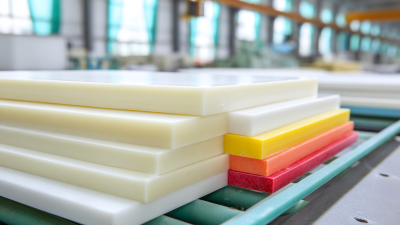
The Future of China Epoxy Glass Fiber Sheet in Global Markets
-
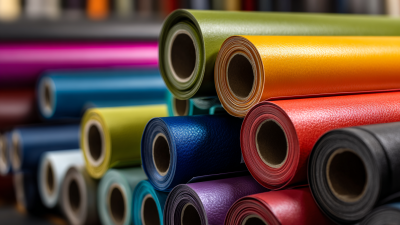
Essential Checklist for Choosing the Right Glass Polyester Laminate for Your Project
-
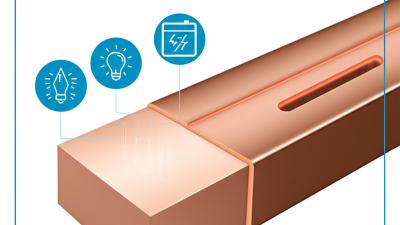
Unlocking the Advantages of Bare Copper Strip in Electrical Applications for Energy Efficiency
-
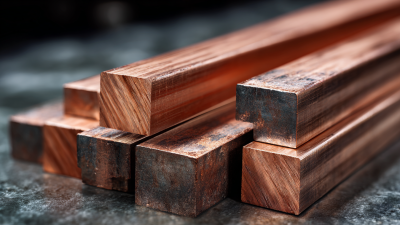
The Future of Innovation in the Copper Aluminum Busbar Market
-
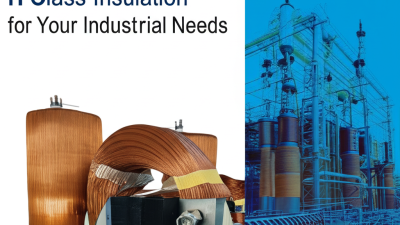
7 Essential Tips for Choosing the Right H Class Insulation for Your Industrial Needs
-

The Ultimate Checklist to Choosing the Best Copper Bus Bar for Global Procurement










